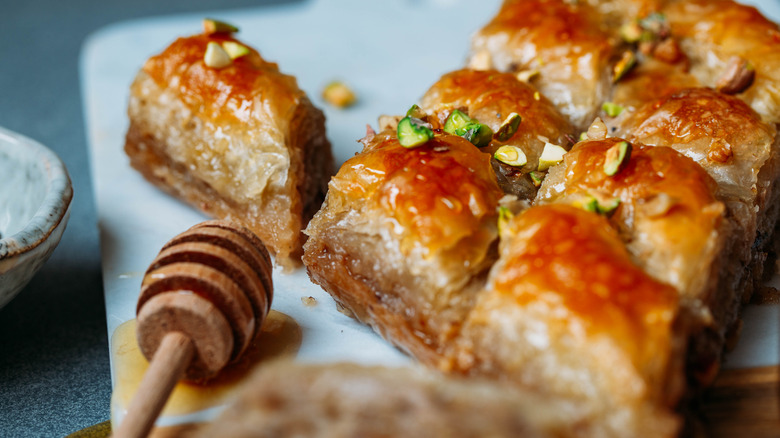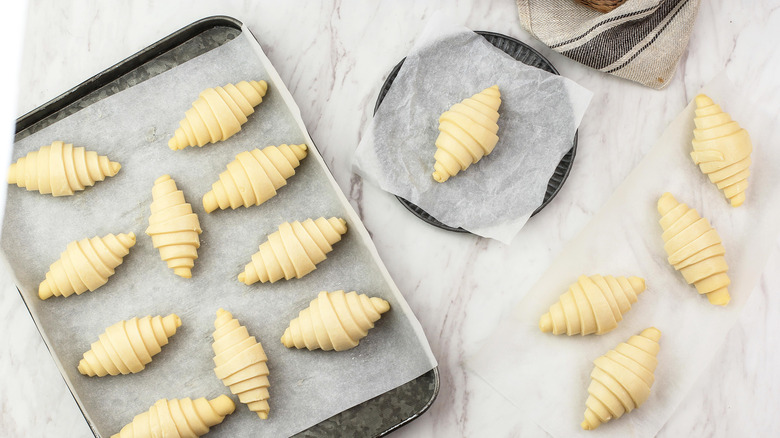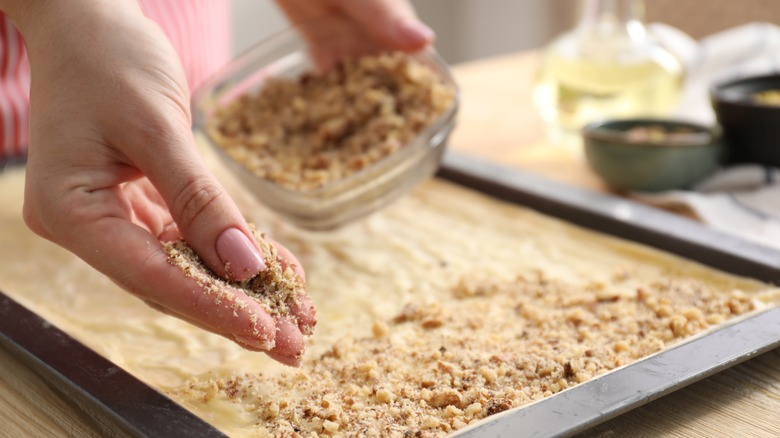The Crescent Roll Hack For Way Easier Baklava
Baklava has a long and storied history. Before its first direct appearance in the 15th century, ancient Greeks, Romans, and the Assyrian Empire had dishes that resembled (at least vaguely) what we would call baklava. It is a dessert that has endured even though it is often relegated to festivals or holidays — and in defiance of the skill required by the traditionally made, from-scratch version.
A classic baklava is usually made with walnuts or pistachios, honey or sugar syrup, and layers of very thin dough. While the nut mixture doesn't need too much precision beyond chopping, and the syrup comes together easily enough, for many bakers, the most vexing, perplexing element they get hung up on is the dough.
Baklava is typically made with phyllo dough — from scratch or frozen — which can be hard to work with and lead to less-than-stellar results. So, it's time to sidestep centuries of tradition for a little culinary convenience. Swap crescent roll sheets for the phyllo dough in your recipe, and you'll end up with a delicious (and way easier) dessert.
Make the swap to cut the challenge
Because they are so thin, you have to treat phyllo sheets with a light touch. You have to ensure they're fully defrosted, or the sheets can shatter. If you handle them too forcefully, the dough can tear and become challenging to work with. Wrap any dough you don't use in a damp towel, or it could dry out. It's tasty, of course, but when you're pressed for time (or patience), phyllo isn't the easiest ingredient to work with.
Luckily, creating a crescent roll baklava is a simple switch and only requires one consideration when making your favorite baklava recipe. You don't need to adjust the filling, but you will have to make a method adjustment for the dough. Usually, baklava is assembled and baked all in one go, but since crescent roll dough is thicker than phyllo, the bottom layer needs to be prebaked for about five minutes to make sure it's cooked through. Then, you can place your filling and top layer, score it, and bake.
Traditionally made baklava has a crispy crust, and this substitution will differ in texture. The crescent roll dough will be a little breadier and fluffier, but the dessert will have the same sweet, nutty taste and require much less effort.
Baking an easier baklava
The swap with crescent roll dough will make the whole baklava process sweetly simple, but if you want to stick with a more authentic experience and keep the phyllo dough, there are still ways to make the bake easy. Even if you use store-bought phyllo dough, the steps for baklava often involve brushing every sheet with butter. Since most recipes will call for a dozen (even as much as 40) sheets, that will be a sticky and time-consuming procedure — luckily, it isn't essential. Instead, brush the butter on a few sheets or lightly brush only parts of every sheet to make it go faster. For even quicker work, you can assemble the whole baklava, score it, and then pour the melted butter on top to let it seep through the layered phyllo sheets.
The nuts in your baklava filling need to be finely chopped, but there's no reason to do that work by hand. If you don't want to deal with a hack for opening pistachios, you can buy them or other nut varieties that are already chopped to save time, or you can put the nuts into a food processor for a few pulses. The chop should be fine but not a powder — so don't chop them too long. With just a few tricks to save time and energy, baklava can be an easy, delicious dessert.


